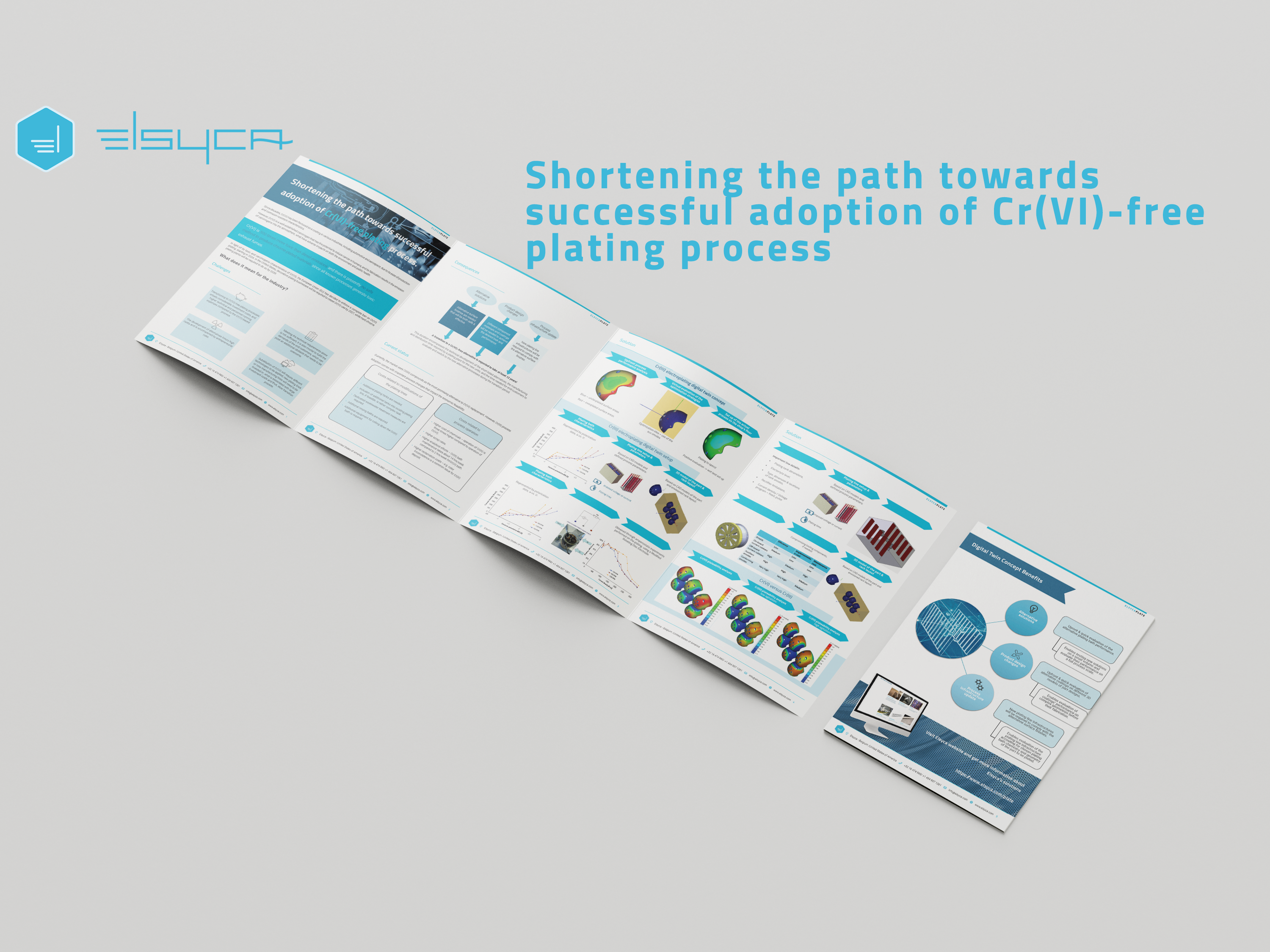
Shortening the path towards successful adoption of Cr(VI)-free plating process
Cr(III) electroplating digital twin concept

Shortening the path towards successful adoption of Cr(VI)-free plating process
Since decades, Cr(VI) has been favored as a coating in various industries, including automotive and aerospace, due to its ease of production and corrosion-resistant characteristics.
However, Cr(VI) is a well-established carcinogen that has the potential to induce cancer in humans, and its fabrication results in the emission of carcinogens into the atmosphere, what have adverse impacts on both the environment and public health.
Cr(VI) is 500 times more toxic than diesel emissions and there is presently no safe method to produce chrome-plated materials since all known processes generate toxic exhaust fumes.
In light of its toxic and carcinogenic characteristics of Cr(VI), the European Union (EU) has decided to enforce a complete ban on Cr(VI) plating, starting in 2024. In the United States, decorative plating businesses will be required to cease Cr(VI) use by 2027, while hard chrome plating plants will be required to do so by 2039.
This paper delves into the pressing challenges faced during the transition from Cr(VI)-based to Cr(VI)-free plating processes. It highlights the necessity for innovative solutions to facilitate this transition, emphasizing the Cr(III) electroplating digital twin concept. By embracing this concept. This approach provides a strategic pathway to accelerate the adoption of Cr(VI)-free plating by simulating and optimizing processes, ultimately steering industries toward a safer and sustainable future.
Explore this paper to learn more about the future of plating and the role of digital twin technology in this transformative journey.
